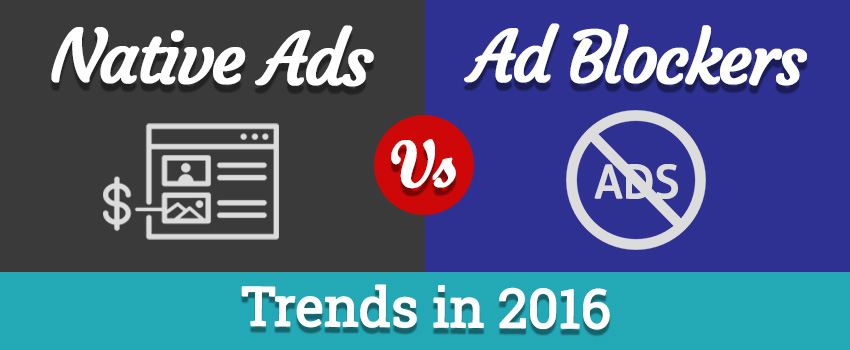Native Ads Vs Ad Blockers: Trends In 2025

Ad blocking has become a popular way to make internet experience non-intrusive. However, this effort automatically leads to advertisers getting less exposure.
Ad blockers come in several forms, and their usage has dramatically increased of late. In 2023 alone, the use of ad-blocking has increased by more than 48%.
According to Pagefair, over 45 million internet users had subscribed to some kind of ad-blocking by July 2023. The global usage reads a minimum of 198 million users and the pace of adoption shows no signs of slowing down.
From the viewpoint of advertisers, over $21.8 billion were being spent on online ads in July 2025, with an expected investment of $41.4 billion in 2025. With ad blockers in place and few end-users choosing to see advertisements, advertisers are beginning to feel like they’re pouring money down the drain.
Causing even more concern is the fact that ad blocking is not just limited to desktop browsing. Even smartphones have begun to support ad blockers. All of these put advertisers in a bad situation, but there’s more to it.

More about Native Ads and Ad Blocking:
Native ads have been served across a variety of mediums in the last decade, in the form of ‘advertorials.’ An early example of such ad is this Cadillac sponsored ad that came out in 1914 in the Saturday Evening Post.
Modern native ads are almost the same, but they use relevant graphics and sponsored content. So why have native ads become such an issue in recent years?
A common saying goes that it’s more likely you’ll survive a plane crash than a click on a banner ad. The spending on native advertising has been soaring in the past decade, particularly after people started using their smart devices more.
A report from Celtra Research points out that, among promotional tools, native ads have been the best performers. The engagement rate with native ads is as good as 18% – nearly double of what advertisers enjoy with other ad forms. An average user spends 40% more time with a native ad than other standard alternatives.
The point is that the moment you start abusing the worth of a native ad, you start losing out on its benefits. A survey by the UK Association of Online Publishers points out that 33% of end users are likely to trust native ads as opposed to traditional advertising.
Clicking on native ads in a website have a greater impact than clicking on native ads that show up in platforms like Facebook. The only way advertisers can get past ad blockers is by putting consumers or their target audience at the center of their strategy.
If advertisers continue to serve native ads in the form of banners, rather than taking the same amount of care as we would with editorial content, it is obvious that the audience will seek a solution that involves ad blockers.
The internet is an ever-changing marketplace, and each individual has endless choices when it comes to information. Native advertising will only be detested when it comes in the way of research or browsing.
Some publishers have in fact taken a more aggressive strategy against ad blocking. In this arms race, technology ensures that advertisers have a weapon against “ad blockers.”
However, leading marketers also understand that a mere counter strategy to block ad-blockers won’t help. There should be enough impetus for the end user to encourage native advertisement and a good example would be the Forbes website.
The Forbes website makes good use of native advertising and has also initiated a counter ad-blocking strategy. The good news for Forbes is that its audience still loves and trusts the brand and respects the content it chooses to show, including advertising in the form of banner ads.
Comment and share with us your opinions about Ad blocking and Native Ads.


Native ads are often found in social media feeds, or as recommended content on a web page. Unlike display ads or banner ads, native ads don’t really look like ads.